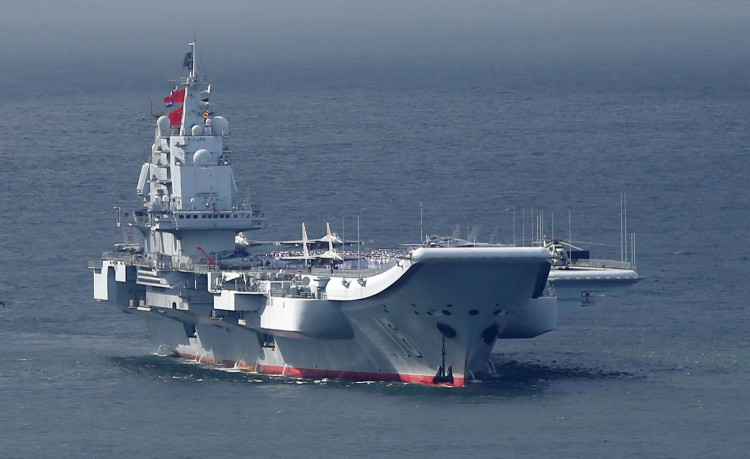China's current plan to build only four aircraft carriers means the People's Liberation Army Navy (PLAN) will remain a "brown water" navy operating close to home and incapable of confronting the more powerful U.S. Navy on the open seas.
China has only two operational carriers: the CNS Liaoning (CV-16) and the CNS Shandong (CV-17). Both these carriers, which feature ski-jump flight decks, are based on outmoded 20th century technology from Russia.
They're intended as stopgaps until the arrival of the nuclear-powered Type 004 carriers. These third-generation carriers will feature capabilities associated with the U.S. Navy's current Nimitz-class, nuclear powered supercarriers. The U.S. Navy operates 10 Nimitz-class carriers.
CNS Liaoning is classified as a Type 001 carrier; the Shandong is a Type 002. Their main drawbacks are their ski jump flight decks that restrict the amount of ordnance that can be carried by the Shenyang J-15 twin-jet, all-weather, carrier-based fighter jet.
The J-15 is the main offensive weapon of both carriers. Liaoning can deploy 26 of these planes. Shandong carries a complement of 36 J-15s.
In contrast, the Nimitz-class supercarrier USS Ronald Reagan (CVN-76), which will likely engage the Liaoning and Shandong in the first phase of any naval war in Asia, carries up to 48 McDonnell Douglas F/A-18 E/F Hornet twin-engine, multirole combat jets. These jets can carry more weapons since they take-off from a flat deck.
The USS Ronald Reagan and her sister ship, the USS Nimitz (CVN-68), are now somewhere in the South China Sea conducting combat drills. The Navy said both carriers are carrying out operations and exercises to support a free and open Indo-Pacific.
China began building the Type 003 in mid-2015. Initial plans called for this warship to launch in 2020 and to enter service with the PLAN in 2023. That timetable has likely been scaled back due to the immense economic damage inflicted on China's economy by the COVID-19 pandemic.
The Type 003 will be larger than both the Shandong and the Liaoning. It will use steam catapults to launch its aircraft, the first PLAN warship capable of doing so. The Type 003 will carry at least 40 J-15s and will be shorter in length than the Nimitz-class.
The Type 004 will be a nuclear-powered carrier. It will be equipped with an electro-magnetic launch system similar to that aboard the U.S. Navy's newest carrier, the USS Gerald R. Ford (CVN-78), which was commissioned in July 2017.
Chinese military sources also claim the Type 004 can generate enough power to operate a railgun and laser weapons. Construction of the Type 004 was initially planned for 2020, but this is uncertain given the dislocations caused by COVID-19.
As of today, operations of both the Liaoning and Shandong are being limited to areas within reach of China's land based anti-ship ballistic missiles such as the DF-16, which has a range of 1,000 km. This means the PLAN remains a brown-water, or a coastal navy, unable to venture into blue waters, or the open ocean, where the U.S. Navy reigns supreme.






